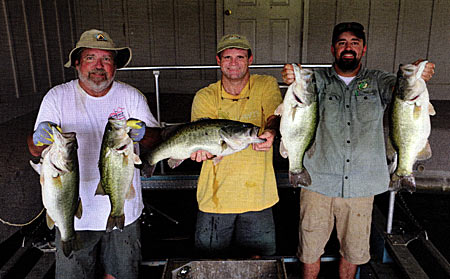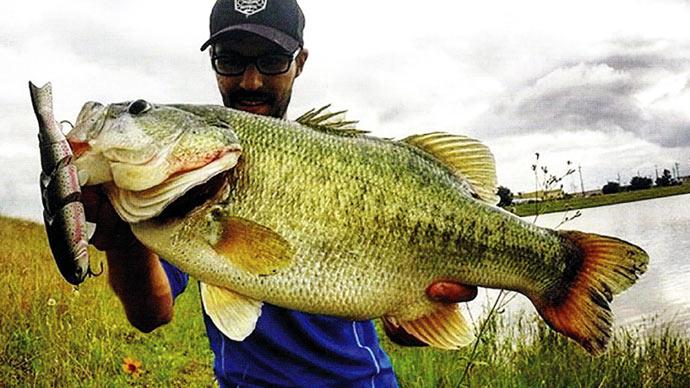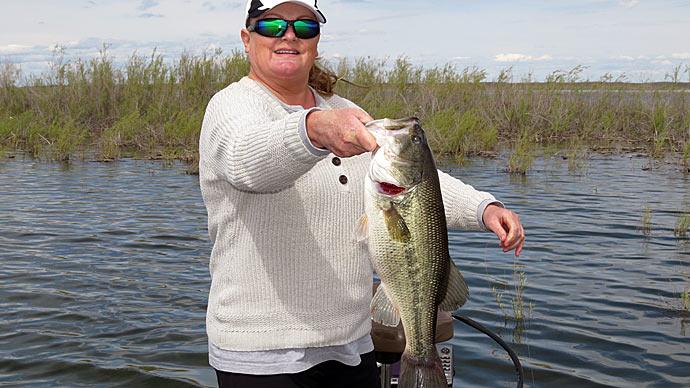
An active area of questions recently has been about Largemouth bass genetics and traits. While there is some information, much is still unknown about specific traits. So, to quote a famous and beloved friend and Fisheries Scientist extraordinaire, the late Dr. Dave Willis, "Even with the information available we really don't know the answers yet."
Two recent studies reference and tie together studies which previous Cutting Edge articles reviewed. The new studies are titled, Loss of Naivety to Angling at Different Rates in Fished and Unfished Populations of Largemouth Bass by Jan-Michael Hessenauer, Jason Vokoun, Justin Davis, Robert Jacobs & Eileen O'Donnell in Transactions of the American Fisheries Society, 145:5, 1068-1076, ©American Fisheries Society 2016, and Can Largemouth Bass Transplanted from an Unexploited Population Genetically Contribute to an Active Fishery? A Test Case for Genetic Management of Exploited Fish Populations by Jan-Michael Hessenauer, Jason Vokoun, Amy Welsh, Justin Davis, Robert Jacobs & Eileen 0' Donnell in the North American Journal of Fisheries Management 37:271-283, 2017 ©American Fisheries Society 2017. The studies explain the rapid evolution problem and provide a temporary solution to the supplemental stocking of new genetics, which many in the Pond Boss family have been using for many years.
Over the course of a single growing season, angler catch rates are known to decline even after accounting for fish density and mortality from angling. Studies of several species have indicated that reduced catch rates are due to adapted learned-lure avoidance, which can quickly become genetic. Catch-and-release angling used by many pond owners provides fish the opportunity to learn to avoid lures through direct experience and via social learning. We should have known this based on stocking (habituation) studies proving that predator avoidance is known to be learned by fish. Catch-and-release angling provides fish a direct negative learning experience and rarely results in mortality. Fish live another day, but adapt and learn lure avoidance. Keep in mind that these biters tend to be the most aggressive fish, which are now less apt to bite again. One interesting point about fish is that they do have distinct personalities, although they tend toward instinct and conditioning. Some fish can be caught over and over, while others are caught once and condition against anything that doesn't resemble their natural food chain. In addition, some scientists and professional biologists think the non-biters learn lure avoidance from watching, which reinforces the negative manmade selection process. In short, fishing is selecting (encouraging) the fish not to bite. On the other hand, if we remove fish we catch, we have removed the best and most aggressive fish, speeding up the bad genetic change. For pond owners, this is a lose-lose proposition. Because non-catchability in recreational angling has been demonstrated to be an inherited trait over time (a couple of years) we can quickly have a pond full of non-catchable fish.
The first study above reflects the large drop in catch rates over a short time (3 months) under controlled conditions. In this study, 56% of the fish were initially uncatchable by lure, and both newly added fish and existing fish quickly learned lure avoidance to the point of a near zero catch rate over 3 months. These types of results were also exhibited in other studies by Philipp, Garrett and others.
Several studies further point out that this catchability problem is much more pronounced in Florida Largemouth bass (FLMB) than in Northern (NLMB) Largemouth bass, which were used in the above studies. Florida (FLMB) are harder to get to bite lures and that is a genetic trait.
Another type of question relates to the mixing of Florida (FLMB) and Northern (NLMB) Largemouth bass genes and how they relate to the catchability problem noted above.
Another recent study titled Subspecies Composition of Angled and Electrofished Largemouth Bass in Texas Reservoirs, Dijar J. Lutz-Carrillo, and Spencer Dumont in Proceedings of the Annual Conference of the Southeast Association of Fish and Wildlife. Agencies 66:75-81, 2012 Proc., addresses in part this type of question.
The study's results provide biologists with a provocative concept that, in southern waters (natural integrated zone of FLMB and NLMB), FLMB likely are more difficult to angle than NLMB, but the phenotype (genetic trait) of reduced angler susceptibility (catchability) is mitigated (reduced) by introgression (genetic mixing), even at low levels of NLMB genes.
While many factors may function concurrently to determine angling susceptibility, including fishing pressure, naivety of individual fish, learned lure avoidance, and stress from catch and release, we now know that catchability is a genetic and heritable trait as was previously discussed in earlier Cutting Edge articles (see Garrett (2002) and Philipp et al. (2009).
Even when there were roughly twice as many NLMB in the survey as FLMB, the cross population showed almost 50% Florida genetics. In one instance, where there was roughly 15 times the number of NLMB as FLMB, the cross population showed 29% Florida genetics. The number of crosses in the tests far outnumbered either FLMB or NLMB. So, under these conditions in Texas waters, over time the FLMB genetics tend to dominate. This does not mean every FLMB trait is dominant. Note that when pure FLMB were removed from the dataset numbers (leaving only crosses with high levels of FLMB genetic influence) the trait of reduced catchability greatly dissipated. Stated differently, the addition of only a small amount of NLMB genetics caused poor catchability to become much less pronounced.
In addition, I recall Texas Parks and Wildlife Department data also showing many of the ShareLunker fish were high FLMB percentage crosses. So, at low rates, the NLMB genes don't seem to reduce growth and size in the crosses.
There is so much more to learn about genetics in general, and that is especially true with respect to Largemouth bass. As Dave noted, we still really don't know the answers.
Reprinted with permission from Pond Boss Magazine



